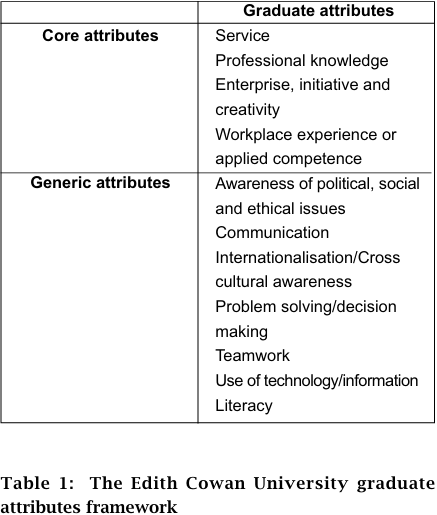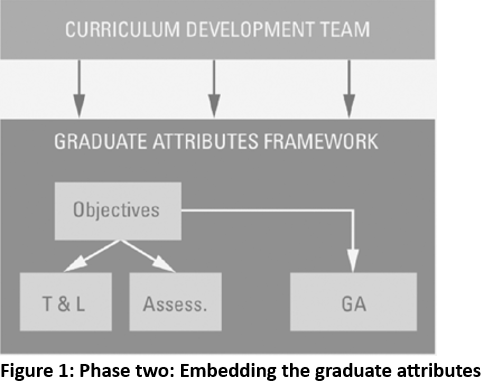
Implementation of graduate attributes at ECU
 المؤلف:
Sundrakanthi Singh & Barry Gibson
المؤلف:
Sundrakanthi Singh & Barry Gibson
 المصدر:
Enhancing Teaching and Learning through Assessment
المصدر:
Enhancing Teaching and Learning through Assessment
 الجزء والصفحة:
P316-C27
الجزء والصفحة:
P316-C27
 2025-07-28
2025-07-28
 539
539
Implementation of graduate attributes at ECU
The adoption of a set of four core and six generic graduate attributes by ECU in 2002 marks a shift in emphasis from content-driven to skills-driven curricula. Despite this shift, subject content remains important as it is the conceptual framework within which skills are developed. Both subject content and application of generic skills differentiate graduates of each degree. The implementation of the graduate attributes framework is uneven across Faculties and Schools. As stated above, staff are faced with ever increasing workloads which lead to time-management problems. They experience competing research and teaching priorities and experience further difficulties associated with the shift to a process teaching approach for which they are often not adequately trained.

The graduate attributes implementation process at ECU involves two phases, mapping and customization, and embedding (Edith Cowan University, 2002). The graduate attributes framework begins at course level and cascades down to the learning opportunities and assessments within units of study. The mapping process involves identifying whether specific attributes are made explicit, are implied or assessed within each unit. Customization relates to realizing the subject specific or professional context for each graduate attribute as this serves to distinguish graduates of different degrees. The attributes are developed progressively as a student advances through a course. The second phase involves embedding the graduate attributes into units. Learning and assessment tasks that address the relevant graduate attributes are identified and mapped. This is achieved by "constructively aligning" the graduate attributes with specific learning outcomes for each unit (Biggs, 1999).
The current initiative is aimed at advancing the second phase of implementation within a particular School. This involves making explicit the links between unit learning outcomes/objectives, developing relevant teaching and learning strategies, and planning appropriate assessment strategies. A starting point for this project is to identify a set of core theoretical principles to guide the assessment practices.

 الاكثر قراءة في Teaching Strategies
الاكثر قراءة في Teaching Strategies
 اخر الاخبار
اخر الاخبار
اخبار العتبة العباسية المقدسة


